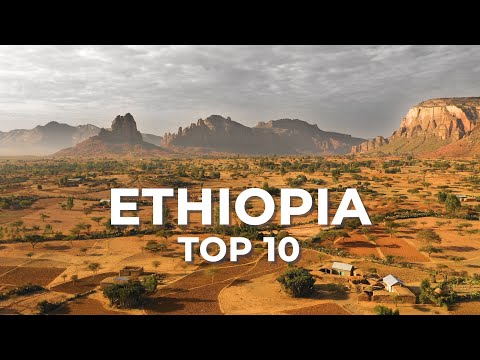
Ethiopia, often referred to as the cradle of humanity due to its ancient human history, offers a unique canvas for explorers and filmmakers alike. The new travel documentary “Journey Through Ethiopia” captures the nation’s breathtaking landscapes, rich history, and vibrant cultures in an engaging narrative that both educates and inspires awe.
#### The Genesis of the Documentary
Directed by renowned filmmaker Maya Jenkins, who has previously won accolades for her insightful portrayals of underrepresented cultures around the globe, “Journey Through Ethiopia” is a visual ode to this East African nation. Jenkins’ motivation for creating this documentary stemmed from her fascination with Ethiopia’s complex tapestry of ethnicities and its pivotal role in human evolutionary history.
#### What Sets It Apart
Unlike typical travel documentaries that skim over tourist spots, Jenkins’ work delves deep into the heart of Ethiopia’s socio-cultural dynamics. The film begins in Addis Ababa, showcasing its bustling streets and emerging skyline, demonstrating the rapid modernization the city is undergoing. However, it’s when the documentary ventures into the rural expanses that viewers truly begin to experience Ethiopia’s soul.
#### Exploring Diverse Landscapes
From the surreal volcanic landscapes of the Danakil Depression — one of the hottest places on earth — to the verdant greenery of the Simien Mountains, “Journey Through Ethiopia” presents an astonishing variety of climates and terrains. This diversity not only serves as a background but also shapes the livelihoods and customs of local communities.
#### Historical Richness
One cannot discuss Ethiopia without touching upon its historical significance. The documentary provides breathtaking visuals of Lalibela with its rock-hewn churches that date back to the 12th century — a testament to Ethiopian architectural ingenuity. Furthermore, it explores Axum where ancient obelisks stand as silent narrators of a once powerful civilization.
#### Cultural Tapestry
Ethiopia is home to over 80 ethnic groups, each with its own unique language and traditions. “Journey Through Ethiopia” does a commendable job in representing these diverse cultures. Particularly moving is its coverage of a Hamar tribe’s bull-jumping ceremony — an important rite of passage for young men.
The segment on Harar Jugol – one among UNESCO’s World Heritage sites – showcases an ancient walled city known for its multi-religious harmony having mosques closely situated next to Christian churches.
#### Challenges along the Way
Filming “Journey Through Ethiopia” was not without challenges. Jenkins highlights issues such as logistical difficulties in remote areas and navigating language barriers while trying to maintain cultural sensitivity during filming. However, these challenges were small compared to her ultimate reward—bringing stories from one of Africa’s most diverse countries to international audiences.
#### Educational Impact & Viewer Experience
Through stunning cinematography and thoughtful narration by Ethiopian historians and locals themselves, viewers are offered a dynamic educational experience. Each frame is designed not just to depict beauty but also prompt reflection on our shared human heritage.
Moreover, Jenkins incorporates interactive elements such as maps and timelines which enrich viewer understanding by connecting historical events with geographical locations visually.
#### Conclusion: A Must-Watch Visual Journey
“Journey Through Ethiopia” is more than just a travel documentary; it’s an immersive exploration into a land with a story as old as time itself. For anyone interested in African cultures or human history at large—or simply looking for stunning visuals accompanied by compelling storytelling—this documentary stands out as a must-watch masterpiece.
Indeed, Maya Jenkins’ latest contribution significantly enhances our understanding and appreciation for this often misunderstood country through lens-based storytelling that transcends mere sightseeing into meaningful cultural dialogue.
